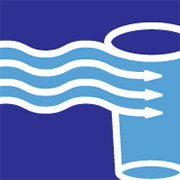The California Water Association (CWA) filed a comment letter in December 2016 in response to the state’s proposed framework (“framework”) for permanent regulations that will implement Governor Brown’s Executive Order B-37-16, “Making Water Conservation a California Way of Life.” The framework was developed jointly by the Department of Water Resources, State Water Resources Control Board, California Public Utilities Commission (CPUC), California Department of Food and Agriculture and California Energy Commission.
CWA expressed general support for the framework while identifying areas of concern. As expressed in the letter, CWA’s recommendations emphasized “the need for practical, water retailer-specific goal-setting, procedural transparency and rational implementation of the state’s new water-use efficiency and drought management policy.”
For clarity and accuracy, CWA suggested revisions to two sections of the framework:
- Section 1.1 Eliminate Water Waste: CWA clarified that the CPUC, as the state agency regulating investor-owned water utilities, had already approved Resolution W-5119 relating to water leaks.
- Section 2.3 Requirements Related to Urban Water Suppliers: CWA clarified that Class A Water Utilities have the capability of breaking down their non-revenue water numbers into components as defined by the American Water Works Association.
Additionally, the following were addressed by CWA and can be found in the comment letter:
- Future water-use targets should be based on research, data and a comprehensive and transparent process.
- Equitable landscape budgeting for special landscape areas such as parks and playfields.
- The CPUC should define the content of the CPUC-regulated utilities’ water shortage contingency plans.
- Californians cannot be expected to adopt the worst-case scenario as their “way of life.”
- The draft report’s directives regarding improving drought planning for small investor-owned water utilities should be clarified.
- The draft report should be more aggressive in encouraging water agencies and utilities to develop resilient water supplies.
- The draft report should acknowledge the need to balance the state’s water-use efficiency objectives with the need to maintain financially viable utilities and affordable water for customers.




